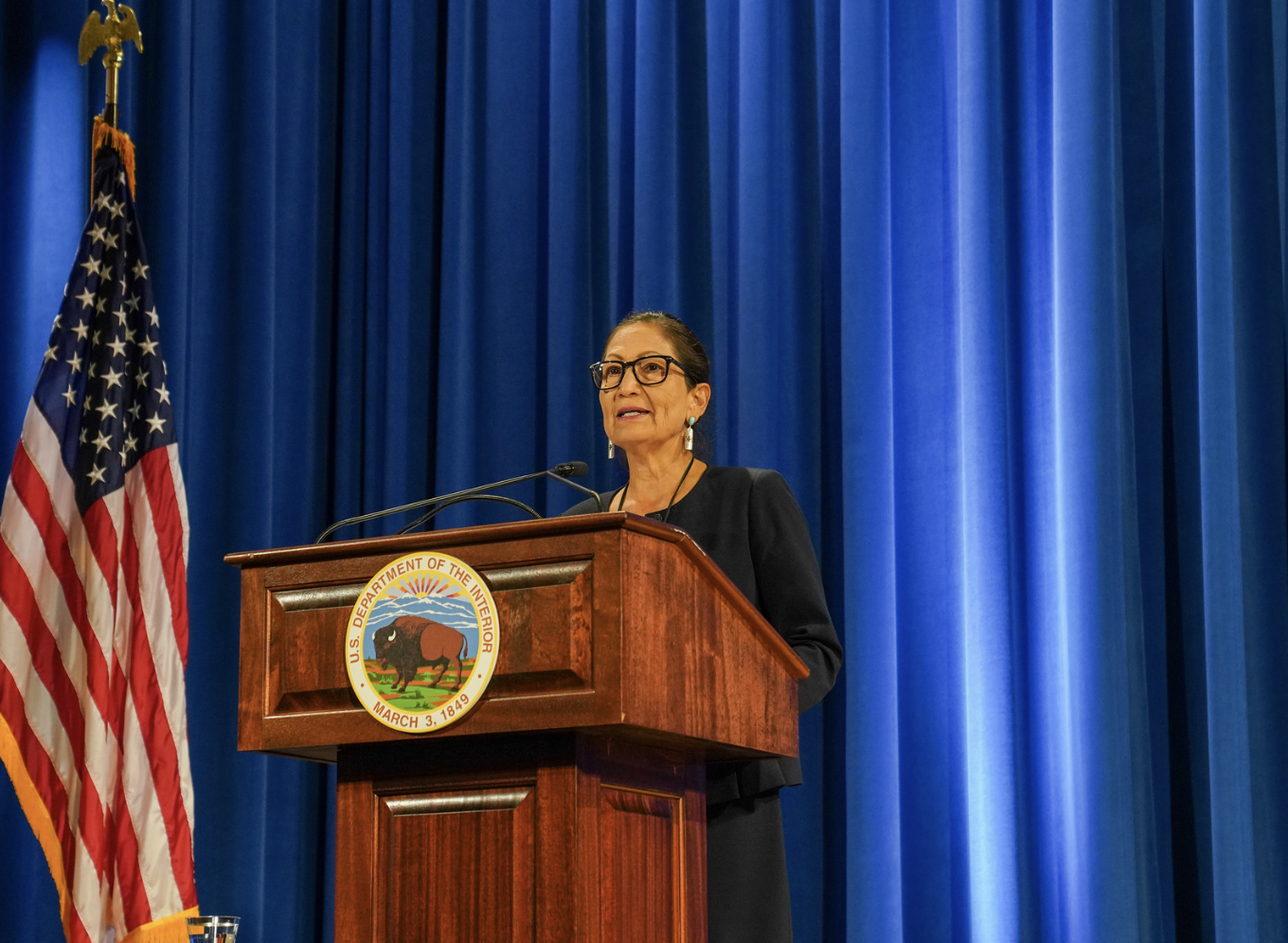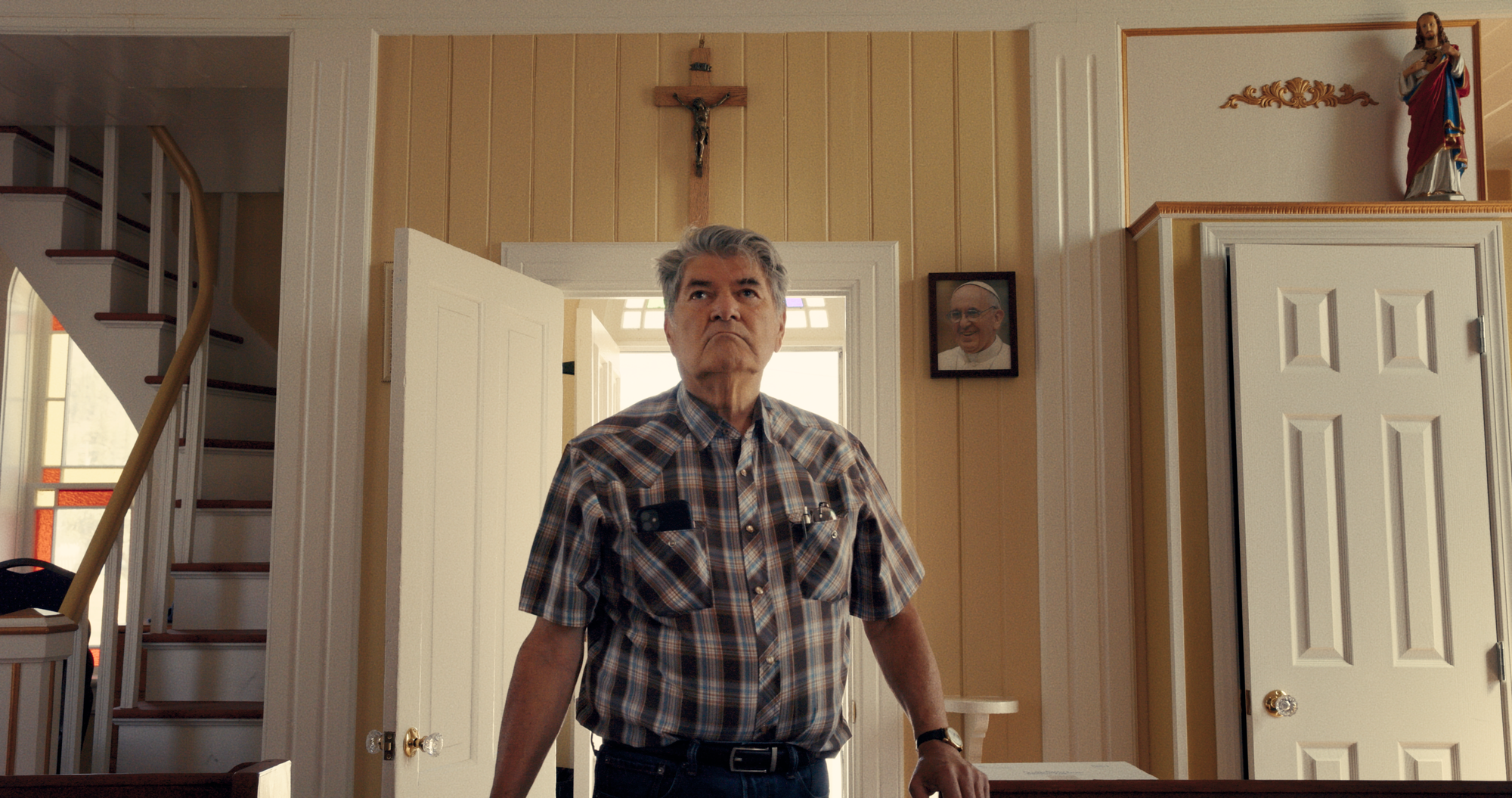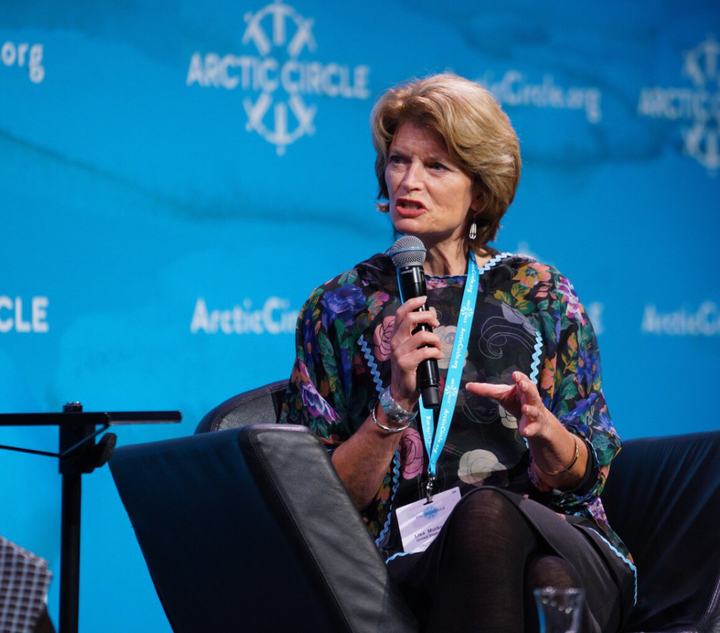A new film highlights the traumas inflicted on Indigenous children by residential schools. Alaskans say that history needs more attention.
“Sugarcane” is set in British Columbia. But after recent screenings in Sitka and Anchorage, advocates say the documentary’s themes are as relevant and urgent just across the Canadian border in Alaska.

This story contains difficult subject matter relating to Canada's and America's history of operating residential schools for Indigenous people. The National Native American Boarding School Healing Coalition has gathered resources for self-care at this site.
A new documentary, “Sugarcane,” recounts the searing, traumatic history of colonization and forced assimilation of British Columbia’s Indigenous people through a network of what are known as Indian residential schools.
The film features former students and their descendants seeking truth, reconciliation and healing from the nation’s legacy of those schools — institutions that the Canadian federal government now says carried out a “cultural genocide” through physical and sexual abuse.
After recent screenings in Sitka and Anchorage — and with the approach of the annual Sept. 30 commemoration for survivors — advocates say the film’s themes are as relevant and urgent just across the Canadian border in Alaska.
Churches and the federal government once operated a similar network of roughly two dozen such schools in Alaska starting in the 1870s, according to federal records.
Those institutions, advocates say, inflicted their own traumas that still cast a shadow over Alaskan survivors and their relatives — many of whom have not had the same chance to process the painful history in the way that’s shown onscreen in the new film.
“I could feel the tension in my body. I was shaking all night; I still feel it now, two days later,” Ayyu Qassataq, a 44-year-old Yup’ik and Iñupiaq advocate, said after watching Sugarcane at its packed screening last month at the Anchorage Museum. “I could feel the presence of that devastating and violent history — a history that is largely invisibilized in Alaska.”
The Canadian federal government established a Truth and Reconciliation Commission in 2008 in response to class action lawsuits filed by survivors of the country’s residential schools.
The commission ultimately concluded that the Canadian schools were a "systematic, government-sponsored attempt to destroy Aboriginal cultures and languages and to assimilate Aboriginal peoples so that they no longer existed as distinct peoples."
Sugarcane’s two directors, who spoke onstage with Qassataq immediately after the Anchorage screening, said they want the movie to lead to deeper understanding among both Indigenous and non-Indigenous people of the systems that operated on both sides of the border.
That’s especially the case in the U.S., they said, where the federal government hasn’t as thoroughly accounted for the schools’ history as in Canada.
In that country, the government has provided some $7.5 billion in restitution for Indigenous people, according to the New York Times.
The Canadian federal government also is currently spending more than $150 million to support tribes as they document, locate and commemorate missing children and unmarked burial sites at former residential schools. In 2008, the prime minister formally apologized for the school system.

“There is not a parallel process of truth and reconciliation happening in this country in as robust a way as there is in Canada,” co-director Julian Brave NoiseCat, who explores his family’s own traumatic history in Sugarcane, said in an interview just before the screening. He added: “It takes a lot of courage to have the conversation. And our hope is that this film inspires people across the country who are living in the legacy of this genocide to have those conversations.”
Sugarcane, described by the New York Times as “stunning” and a “must-see” film, tells the story of a single Canadian First Nation in British Columbia, and its efforts to excavate and account for the deep harms inflicted by a Catholic-run boarding school.
NoiseCat’s grandmother was a student at the school, where she gave birth to NoiseCat’s father. Harrowing scenes feature survivors and former workers recounting how unwanted babies born to Indigenous students at the school were sometimes thrown into an incinerator.

The school was one of 139 now recognized to have operated in Canada, largely by churches with government funding. More than 150,000 Indigenous children were placed at the schools, where "the explicit intent was to separate" them from their families and culture, according to Canada's National Centre for Truth and Reconciliation.
Efforts to account for and reconstruct the history of residential schools in America have gained traction only in the past few years. U.S. Interior Secretary Deb Haaland, the first-ever Indigenous person to hold her position, launched a federal initiative in 2021 to recognize and document the schools’ legacy — and the legacy of her own agency, which helped carry out federal Indian policy.
That effort included a public listening session in Anchorage last year and the first-ever official list of federal Indian boarding schools across the U.S.

The Interior Department now says there were 417 institutions that operated in 37 states. There were 22 schools at 26 different sites in Alaska, where many were run by churches with federal support — and at least 31 Alaskan students died while attending the schools, the Interior Department said.
At the Anchorage listening session, not every story told was traumatic: Some speakers said they looked back fondly at their time at Sitka’s Mt. Edgecumbe boarding school.
[Read a transcript of the Anchorage listening session.]
But others offered searing accounts of their own stays at other Alaska residential schools, and of the experiences of their parents.
There were beatings with brooms and belts that drew blood, students locked in dark rooms and closets. Dorms full of crying children, some of whom were separated from the older students who were trying to comfort them.
One group of children had their traditional clothes and foods — their parkas, dried caribou and salmon — burned in a furnace as they were being issued identifying numbers, forced to shower and have their heads shaved.
Some pre-teen girls were returned to their homes in the middle of the school year, pregnant after being raped by workers. Other children never returned home at all. One participant at the listening session said that more than a half-century later, her 86-year-old mother was still too scarred to recount her own experience.
“It took just one year to take my language, take our identity, take who we were away from us, everything,” said Robin Sherry, who was sent from her home village of Minto, in Alaska’s Interior, to a boarding school in the Southeast Alaska town of Wrangell. Another testifier, Theresa John, put it this way: “Anything that identified us, who we are, what we eat, how we speak, how we live, how we think was being attacked, and it was destroyed.”

Qassataq, who spoke at the recent screening of the new documentary in Anchorage, said the traumatic experiences at residential schools are essential context that’s often left out of public discussion of social problems among Indigenous people.
"Every single challenge and social ill experienced within the Alaska Native community has roots in this violent period of rapid assimilation and colonization. We were taken from our families, communities, languages and ways of life that loved us and placed into a system that did not," said Qassataq, who runs a consulting firm, Qulliq Munaqtuġuut, that promotes Indigenous self-determination and well-being.
She added: "That abuse continues to show up in all kinds of ways — from dysfunction in our relationships with each other to the various forms of violence within our communities that you can look up statistics on. The roots of that violence come from systems that taught us to hate who we are, and largely still dishonor our inherent right to live our ways of life on our own homelands.”
A final report issued by the Interior Department in July found that the U.S. government spent more than $23.3 billion, adjusted for inflation, on the federal Indian boarding school system, as well as on "other similar institutions and associated assimilation policies."
The report came with eight formal policy recommendations — including that a formal federal apology be issued; that the government share accounts of the schools; properly reburying children who died at them; paying for healing programs and Native language revitalization; and collaborating with other countries that ran residential schools.
Legislation to advance that work, introduced by Massachusetts Democratic U.S. Sen. Elizabeth Warren and co-sponsored by Alaska Republican U.S. Sen. Lisa Murkowski, is pending in Congress and was endorsed in a near-unanimous vote by the Alaska Legislature earlier this year.
The proposed bill from Warren would budget $15 million a year for six years of continuing investigation and related work by a newly created congressional Truth and Healing Commission.
One organization with a legacy of mission work and operating residential schools has already issued formal apologies in three Alaska communities — Douglas, Kake and Kotzebue.
The Alaska Friends Conference, a group of Quakers, began their work in 2019 after a meeting with the First Alaskans Institute, a nonprofit policy and advocacy organization.
Qassataq, who worked for the institute at the time, asked the Quakers to look at their group’s own history in Alaska and its effect on Native people.
That request set off a years-long effort that revealed some difficult truths, said Jan Bronson, one of the Quakers who participated in the research.
Part of what drew Bronson to becoming a Quaker, she said, was the movement’s history working on the abolition of slavery and in support of women’s equality. She said she was “shocked” to learn about its participation in the residential schools system — especially in the Lower 48, but also in Alaska, where there was a Quaker-run school in Douglas, near Juneau, from around 1888 to 1902.
At a Quaker run-school, one administrator was described as using “the strap" — meaning physical punishment — and some children who spoke their Native languages had their mouths sponged out with harsh-tasting herbs, according to Bronson.
Quakers, she said, “were right in there, designing this sort of assimilation policy that the U.S. government put into place.”
That discovery left the Alaska Friends Conference with a “moral and spiritual imperative” to take action, said Cathy Walling of Fairbanks, another member of the group who participated in the research and subsequent apologies.
The Alaska group, in addition to issuing formal apologies at the invitation of affected communities, worked with Quaker branches in other states to contribute more than $90,000 to a healing center in the village of Kake, where there was once a Quaker mission.
A tribal leader there said the contribution “by no means lets the Quakers off the hook,” though he called it "a good start to healing."
But the Quakers were just one religious denomination involved in the assimilation of Alaska Natives. Walling said she’s not sure that members of other groups and churches involved in the state’s residential institutions have accounted for their histories in the same way.
“The people in those churches, how much do they know that history, or are just even aware of the boarding schools that their denominations ran?” Walling asked. “I’ll speak for myself and say, I did not know that Quakers ran a boarding school in Douglas, Alaska before we stepped into this healing journey. And I’d venture a guess that there are many other, particularly white people, in these other denominations that may not know either: What were the boarding schools that their own denominations ran?”

Watching the new documentary, said Qassataq, is one way that people who work with Alaska Natives, or represent them in government, can better understand the history.
And while the material may be too “raw and triggering” for some Native people, she added, those who are prepared for it can experience “affirmation and validation.”
“It helps to visibilize what we know to be true but can't always articulate, about how devastating this history is,” she said. “We've been gaslit, as Americans, for hundreds of years — whitewashing all of this history and being made to believe that something is wrong with us.”
Sugarcane is not yet in wide release. But the filmmakers say it will be available for streaming on Disney+ later in the fall.



